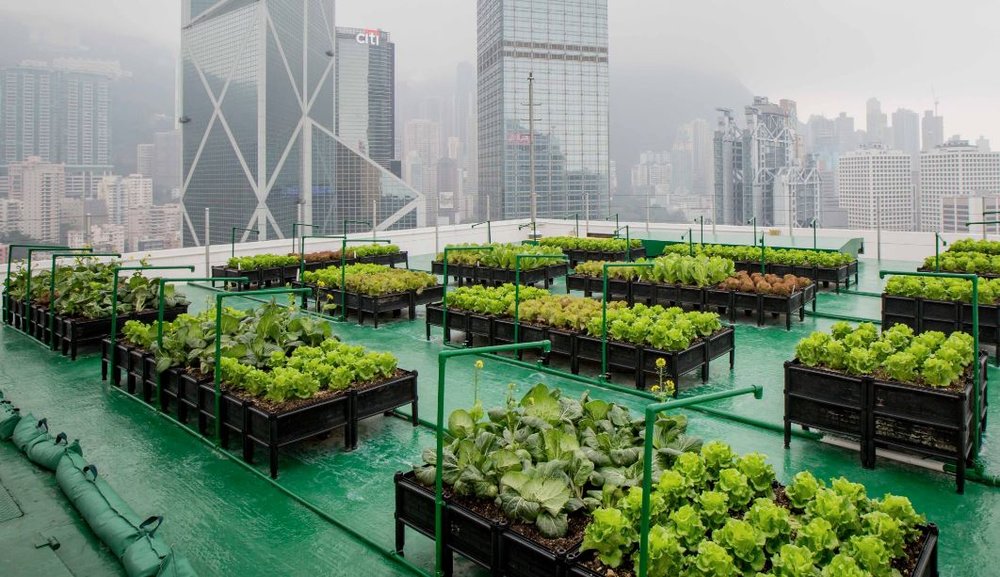Getting The City Blooming To Work
Wiki Article
Our City Blooming Diaries
Table of Contents8 Simple Techniques For City BloomingThe 4-Minute Rule for City BloomingSome Known Incorrect Statements About City Blooming The Ultimate Guide To City BloomingThe Ultimate Guide To City Blooming
Intrigued in growing food for sale in the City of Chicago? Below is a checklist of frequently asked inquiries regarding the rules and guidelines that cultivators must take into consideration when intending an urban farming job.
The zoning modification does not customize any other codes taking care of composting, building licenses, buying or leasing City possessed residential or commercial property, organization licenses or ecological contamination. There are existing codes that control these issues and they remain in complete effect and may be suitable to your task. Neighborhood gardens are generally had or taken care of by public entities, public companies or community-based companies and kept by volunteers.
Urban ranches grow food that is intended to be offered, either on a nonprofit or for-profit basis. Due to their industrial function, metropolitan farms need a company license.
Little Known Facts About City Blooming.
Composting is allowed however only for plant material that is generated and utilized on site. The amount of garden compost product can not exceed 25 cubic yards at any kind of provided time according to the requirements in 7-28-715 of the City's Municipal Code. Yes. Because the dirt at most new garden websites needs modifying, compost, dirt, timber chips, or other products can be acquired to build or enhance the growing area - sustainability.
If a building permit is required then the hoophouse will certainly be considered an accessory structure. You can figure out even more about the building license requirements by speaking to the Department of Structures. The 25,000-square-foot dimension restriction is planned to avoid a solitary community yard from dominating an offered block or diminishing the block's existing domestic or industrial character.
The limit does not apply to yards situated in Public Open Space (POS) districts. Can there be even more than one neighborhood yard that is 25,000 square feet on a single block? Fencing is not called for, nonetheless, gardens that have huge car park areas may be needed to set up fencing or various other landscape design features.
The Best Guide To City Blooming
B1 & B2 areas call for that all commercial use activities be carried out indoors. Is secure fencing required for urban farms? Fences may be called for, along with landscape design and testing, for specific car parking locations and outside work or storage areas depending on area and the certain activity taking place.Yes. Urban ranches call for structure authorizations and zoning authorizations prior to building and construction. Other kinds of city review may be required relying on certain frameworks, activities, dimension, landscaping, licensing, public heath and stormwater administration issues. A lot of these requirements are determined in the project style or allowing process, nevertheless, the applicant might be accountable to independently identify certain licenses or permits that may be called for.
Yes. The sort of permit his response is figured out by what is taking place at the site. The Department of Organization Affairs and Consumer Security can help determine the details kind of service license that's called for. Yes. Off street vehicle parking is required for the majority of industrial projects in Chicago. The required variety of auto parking spaces is based upon the variety of workers working with website and not the square video footage of the expanding space.
The Basic Principles Of City Blooming

Yes. An urban ranch can offer garden compost product produced on website, however, the operation has to abide by the laws in 7-28-715 of the Chicago Municipal Code. Yes. Aquaponic systems are allowed inside on urban farms in several zoning districts. Nevertheless, a zoning testimonial and structure authorization is required in order to install frameworks or systems and a company permit is called for as described above.
Up to 5 hives or swarms of honey might be maintained as an accessory usage. Nonetheless, beekeepers have to register with the Illinois Division of Farming. For additional information about the suggested zoning modification you might speak to the Department of Housing and Economic Development, Bureau of Preparation and Zoning at 312.744.8563.
, which takes place in country areas at the side of suburbs.
The Facts About City Blooming Uncovered
It can involve a motion of organic farmers, "foodies" and "locavores", that look for to create social networks based on a common ethos of nature and neighborhood holism. These networks can develop using formal institutional support, coming to be integrated into neighborhood town as a "shift community" activity for lasting city development.The extra direct accessibility to fresh vegetable, fruit, and meat products that might be realised through metropolitan farming can improve food security and food safety and security while reducing food miles, causing reduced greenhouse gas discharges, therefore adding to environment modification reduction. Some of the very first evidence of city farming comes from Mesopotamia.
Report this wiki page